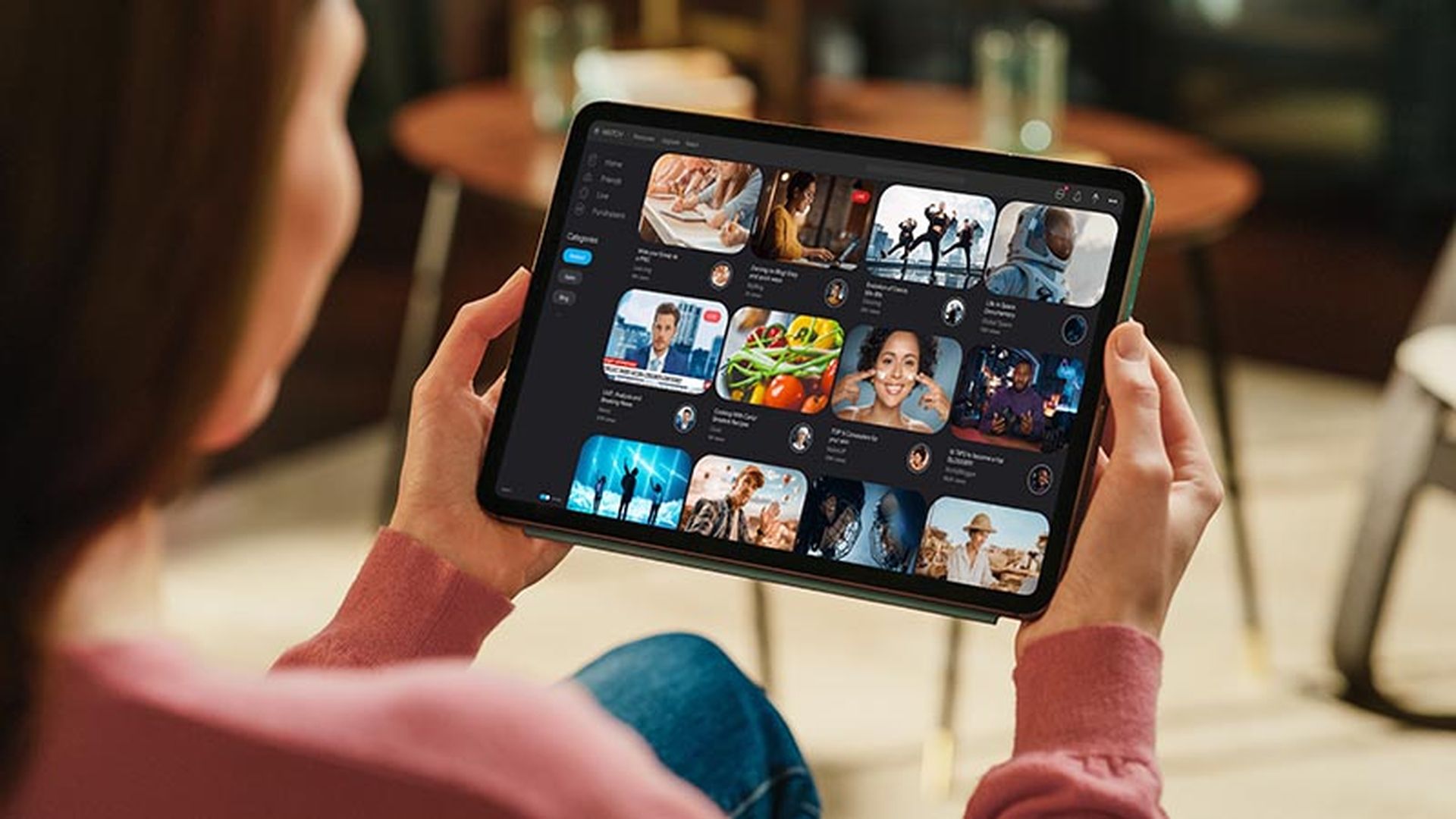


With today’s changing customer expectations, companies recognize the need to evolve their loyalty programs and create a consistent customer experience with personalization across all touchpoints. At the same time, companies are under pressure to reduce operating costs and find new sources of revenue. Therefore, it is important to build your loyalty program in a sustainable way. This all starts with a loyalty vision and strategy, that unites all teams and departments within a firm.
Did you know that 90% of consumers have a negative perception of loyalty programs, 54% of members are inactive and 28% of consumers abandon loyalty programs without redeeming any points? This raises the question, “Why invest in loyalty?” Despite the negative numbers, loyalty can save you costs, if built sustainably. Acquiring a new customer is at least five times more expensive than retaining an existing one. In addition, it can lead to a five-percent increase in annual revenue, because loyalty drives up customer lifetime value (Source: Harvard Business Review). Furthermore, eight out of ten customers who are loyal to a brand promote this brand among family and friends (Source: Loyalty deciphered, Capgemini).
So, there are sufficient reasons to invest in loyalty, but what is loyalty exactly? Loyalty consists of various theories and its purpose is to bind customers to a brand. A commonly used method to gain loyal customers is to develop a loyalty program. This should comprise a structured marketing strategy that generates rewards for customers based on their repeat purchases and engagement on a continued basis. Now that we know why we need to invest in loyalty and what loyalty is, the question that remains is, “How do you build a sustainable customer loyalty model?” We answer this question in this blog and it is based on six building blocks.
1. What should you consider when acquiring and registering customers?
When introducing or redesigning a loyalty program, you need to think about how to attract customers. An effective way to attract customers is with relevant benefits that fit within the company’s brand. This can be crucial to the success or otherwise of your program. The registration process is also important as this is the first impression customers get of your program, so design it carefully. Whether it’s online and/or offline, registration and participation should be easy and seamless processes. If the registration process is complicated and not user-friendly, customers will already drop out at this stage, as this is one of the main frustrations among customers. You should also make sure not to request and gather unnecessary personal data. Besides the fact that filling out long forms is time-consuming; customers can become suspicious of what a company is doing with their data. It is therefore advisable to ask for the bare minimum at first and then slowly collect more data later in the journey. Moreover, it is important to offer training to those employees involved in operating the loyalty program and keep them up to date. Nothing is more annoying than an employee who can’t help customers with their registration and who doesn’t know anything about the loyalty program or the current offers.
2. How do you identify your customer?
To identify a customer, it is important that they have a unique ID, which is connected to multiple applications to initiate the central customer profile. You can arrange this via a simple, singular login with a client number, barcode and/or QR code (physical or digital card) in the app, website, cash registers (incl. self-checkout) and customer service. There should be a single source of truth in your application landscape for every unique customer, so that you can provide the best possible customer experience in store, near store, and online. It can be very frustrating for a loyal customer not to be recognized when they contact customer service via different channels, for example. In addition, as an organization, you don’t know what kind of customer you are dealing with (very loyal or not loyal, for example) and can’t anticipate this. As a brand, try to identify your customers automatically and as early as possible in the customer journey via app (phone), web and/or loyalty card. Technology can be used for real-time localization using GPS, Wi-Fi, mobile network, and beacon technology. This enables communication with the customer based on context and location to enhance customer interaction. It’s important to update these data insights to enrich the customer data for profiling and personalized engagement.
Within registration and identification, another important topic to consider is regulations such as GDPR and other local laws concerning privacy and transparency, as you want to reduce the risks for both the customer and the company.
3. What are the different loyalty mechanisms?
The next element to consider is what type of loyalty program best suits your business and customer needs. The program should be based on a mechanism that is understandable to both customers and employees. It could offer tempting and relevant deals, for example, which are up-to-date and available across different channels. The earning and redemption of rewards should be possible through both a physical (if you have a store) and a digital loyalty card. Also, customers should be able to easily access their balance both online and in stores.
A loyalty mechanism that is commonly used is the Earn and Burn program, which rewards customers for their (purchasing) behavior towards your brand. One of the challenges of the earn-and-burn program is that it is often not enough to reward customers with just points, they want rewards that are relevant and valuable to them. Other loyalty program types are cash back, paid loyalty, and partnerships. In a cash back program, often offered by credit card issuers, customers are rewarded with money, for example a percentage of the purchase amount. Paid loyalty is when customers pay a fee to participate in the program and receive ongoing benefits in return, such as free shipping. Strategic partnerships are formed by companies to better service their customers, who then are rewarded for engaging with either of the companies in the partnership.
The mechanisms have different levels of simplicity to implement and ease of use. You can have simple loyalty cards without points, or programs with points, tiers (based on customer spending) or both. The first has the lowest technical complexity and this complexity increases as points and tiers are added. When the complexity increases, it is also possible to create an emotional connection, as this is not achieved by merely handing out points. All of these loyalty program types can be connected by combining aspects of the different types and creating a hybrid program to fit your needs.
4. What’s in it for the customer?
There are several ways of rewarding your customers and we will highlight four. The first and most commonly used method is discounts. By providing discounts, you can attract buyers. Discounts come in all shapes and sizes. For example, a promotion code for the next purchase, a discount when you sign up for the newsletter, special member discounts, and personal offers. Discounts play the biggest role in loyalty program use, as indicated by 74% of customers (Source: Comarch) Secondly, when you have attracted customers, special services comfort buyers. Examples include higher-quality services, free shipping, free content, and early access to products. Around 20% of customers say they would like to receive such rewards (Source: Comarch). Thirdly, brands can give you access to a community of like-minded people, and you can send birthday gifts. Additionally, when you have comforted your buyers, you can strengthen the bond through gamification. You could, for instance, reward people who take a quiz or provide feedback. Another form of gamification is rewarding customers every time they reach a new milestone. Finally, you can go the extra mile by introducing add-ons, such as organizing (member) events, the option to donate rewards to charity, or providing products on subscription. These types of reward appeal to 14% of customers (Source: Comarch). As you can see, there are plenty of reward options per type and stage in the customer journey, so choose which forms best suit your customer and brand.
5. How can you create a personal experience?
One size fits all does not apply when creating a sustainable loyalty program. Nowadays, customers not only expect high-quality products and excellent service, but also relevant offers and personalized content that is tailored to their needs. People expect personal experiences everywhere, because they already happen more and more in everyday life. A customer’s favorite streaming service recommends series based on the movies they like and the supermarket around the corner offers personal promotions based on frequently bought products. Customers expect brands to listen, understand and anticipate their needs with valuable suggestions throughout the entire customer journey. To build a lasting relationship with your customer, it is important to create a 360-customer view, know your customers’ needs and values, and act on this information. The use of customer insights and automated tools will help you to create personalized content and consistency in your omni-channel communication. This personalized content should be based on customer characteristics and preferences. Relevant offers can be created based on shopping behavior and engagement with the brand, for example. After buying a product, you could offer a loyal customer discount on complementary products, or you can predict when the customer is likely to run out of the product and adapt the deals you offer. By offering relevant and personal content, and products based on customer insights, you can increase the customer lifetime value.
6. Which data and technology is needed for your program?
Building block six is one of the largest, most complex, and time consuming to realize within a company, as you need to consider a lot of questions. For example, which KPI’s measure our vision and goals, and therefore need to be reported? What applications best suit all requirements and fit within the architectural landscape? And how are all the data running through all the different applications in the landscape?
Every company has its own goals and strategy associated with its core values. An example of a loyalty vision is Nike’s, which recognizes community as a value, with movements and communities of like-minded people, such as running clubs. Amazon Prime, meanwhile, chooses convenience, where people are willing to pay for services that make their life easier. So, what kinds of KPI would quantify the success of those companies’ values? For Nike, it could be the number of new or active members, likelihood to recommend, or contacts per interaction. While for Amazon Prime, it could be usage metrics or customer-base penetration rate, likelihood to buy additional products, or revenue per member.
Thinking about what to report on is a good way to start thinking about all the data running through the different applications. There is a need for centralized customer data to avoid data silos from all those applications. When a company starts to create a 360˚ customer view, capabilities are needed to manage the right customer data from the company, to ensure the best personal experience. Whereas third-party data is being phased out, loyalty programs will become the main instrument for collecting zero-party data. Companies can also use these insights to develop new products or propositions in the future.
A cohesive application landscape is needed throughout the customer lifecycle and in all channels, online and offline, from your digital customer experience platforms to your back-end systems.
Conclusion
Starting from the question, “How do you build a sustainable customer loyalty model?”, we can conclude the following. The building blocks provide a framework to start building your customer loyalty. However, it all starts with a vision and strategy, based on the brand’s core values. An easy, understandable, and seamless registration and participation process is crucial, since a lack of this is one of the main annoyances that causes customers to drop out. The most important element from the building blocks on which marketers should focus on the coming years is constructing a solid data-driven base to hyper-personalize offers and content. Furthermore, since we are entering a zero-party data era, loyalty programs will become even more important in the future. Our data teams within Capgemini can tell you more about the Customer Data Hub as a key enabler and single source of unified, trusted, and actionable customer profiles, measures, and insights. And finally, choose the right technology, that is feasible in relation to your company’s current application landscape and in order to achieve the objectives of improving overall CLV, lowering customer churn, and acquiring new customers. When combining all the elements from the building blocks, make sure they are not only in line with the company’s vision and strategy, but also connected to the other blocks. This will help you to create a consistent loyalty program in which all the elements are seamlessly integrated for the best possible customer experience.
Contributed blog courtesy of Capgemini and authored by Lotte Derichs-Sluiter, loyalty expert at Capgemini, Zita Delsing, customer engagement consultant at Capgemini and Lobke Kolhoff, customer engagement consultant at Capgemini. Read more contributed blogs from Capgemini here.




